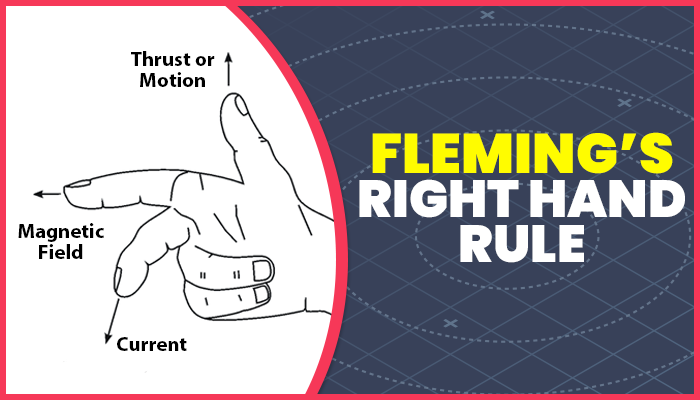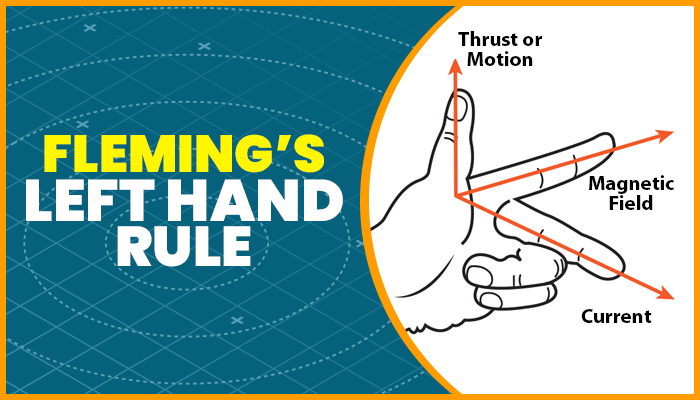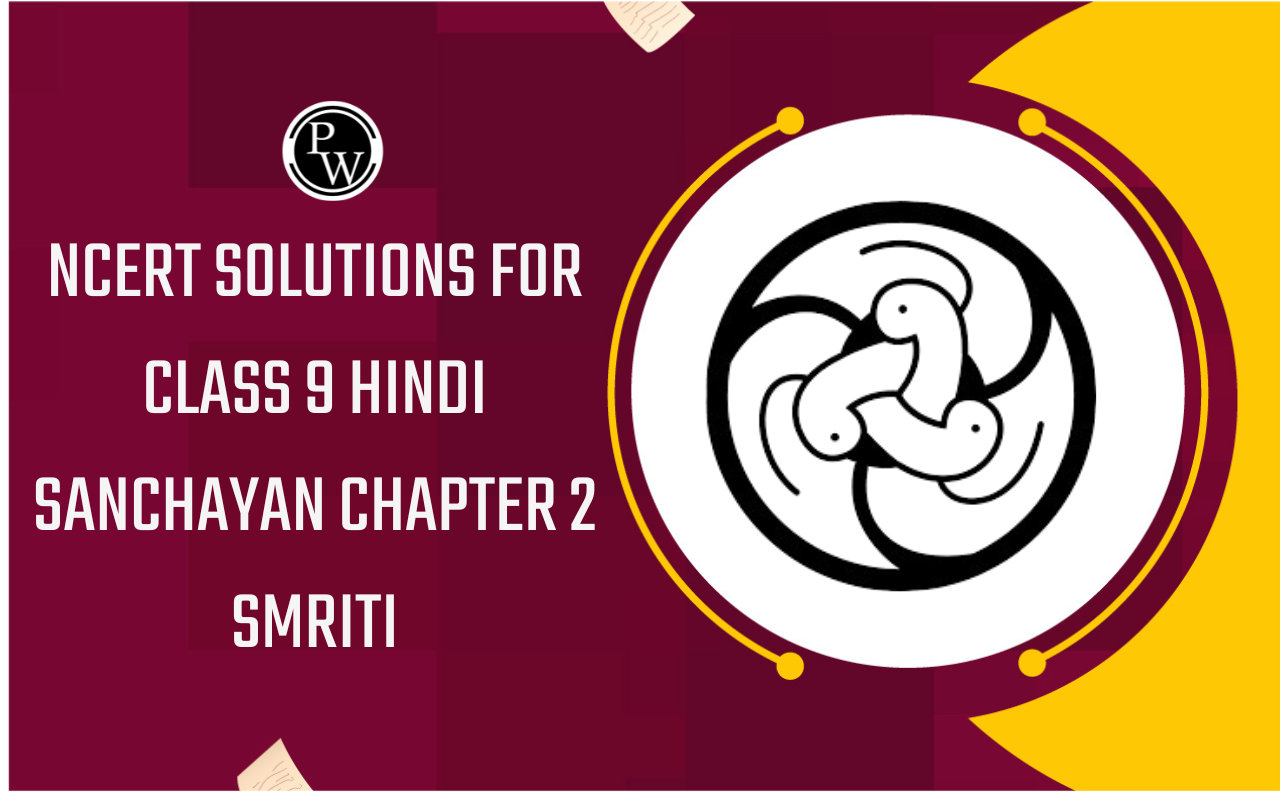
Fleming’s Left-Hand Rule And Fleming’s Right-Hand Rule
Oct 12, 2022, 16:45 IST
Fleming's left-hand rule and the Fleming's right-hand rule are basic rules applicable in both magnetism and the electromagnetism. John Ambrose Fleming discovered them in the late 19th century as a simple way to determine the direction of motion in the electric motor or the direction of electric current in an electric generator. It is important to know that these rules do not specify magnitude; instead show only the direction of three parameters (magnetic field, current, force) if the direction of the other two parameters is known.
| Table of Content |
What is Fleming’s Right-Hand Rule?
According to the Faraday’s law of electromagnetic induction, when the conductor moves through a magnetic field, the electric current is induced in it. Fleming’s right-hand rule is used to represent the direction of the induced current.

Fleming's right-hand rule states that if we arrange the thumb, forefinger, and the middle finger of the right-hand perpendicular to each other, then thumb will point in the direction of the conductor's movement that is relative to the magnetic field, then forefinger will points in the direction of the magnetic field, and the middle finger also points in the direction of the induced current.
Application of Fleming’s Right-Hand Rule
It is work on the principle of electromagnetic induction. When a coil is rotated between the magnet or when the magnet is rotated in and out of the coil, the current is induced in the coil, and Fleming’s right-hand rule gives the current direction.
What is Fleming’s Left-Hand Rule?
When the current-carrying conductor is placed in an external magnetic field, then the conductor experiences a force that is perpendicular to the field and the current flow’s direction. Fleming’s left-hand rule is used to find the direction of the force acting on the current-carrying conductor placed in a magnetic field.

A Fleming’s Left Hand Rule states that when we arrange our thumb, forefinger, and the middle finger of the left-hand, that is perpendicular to each other. The thumb will point toward the direction of the force experienced by a conductor, the forefinger will point toward the direction of the magnetic field, and the middle finger will point toward the direction of an electric current.
Application of Fleming's Left-Hand Rule
- When an electric current passes through a conductor, it creates a cylindrical magnetic field around the conductor. Magnetic and electromagnetic fields interact when an external magnetic field approaches a current-carrying conductor.
- This interaction between the current and the magnetic field creates a physical force.
- We use this rule to calculate the direction of this force. If the left hand's middle finger indicates the current's direction, the index finger represents the direction of the external magnetic field, then the thumb of our left hand will point in the direction of the force.
- In a DC electric motor, the electromagnetic field interacts with the magnetic field generated by the permanent magnets, and due to this interaction, a physical force is produced.
- Using this rule, we can find the direction of this force and the direction of motion of the motor.
Difference Between Fleming’s Left-Hand and Right-Hand Rule
| Fleming’s Left-Hand Rule | Fleming’s Right-Hand Rule |
| It is used in electric motors | It is used in electric generators |
| The purpose of this rule is used to find the direction of the magnetic force acting in an electric motor. | The purpose of this rule is used to find the direction of the induced current in an electric generator. |
| In the left-hand rule, the middle finger represents the direction of the current. | In the right-hand rule, the middle finger represents the direction of the induced current. |
We can observe that the left-hand rule applies to motors and the right-hand rule applies to generators. Fleming's left-hand rule and Fleming's right-hand rule are pairs of visual mnemonics (mnemonics are learning techniques or memory aids such as an acronym, rhyme, or mental image to help to remember things). These rules are generally never used except as a convenient trick to determine the direction of the resultant - either current or thrust. The Lorentz force indicates the magnitude of the force in this direction determined by these rules.
Solved Examples
Q1. Find the direction of the force that is acting on the proton if the proton moves towards the east by entering a uniform magnetic field in the downward direction.
Ans. It is given that proton is moving towards the east direction, and therefore, the motion of the current is towards the east direction. The direction of the force is towards the north as the magnetic field is acting downwards. Therefore, we can say that direction of force acting is toward the north.

Q2. Find out the direction of an magnetic field if an electron is moving towards vertically upwards and then deflected towards the south due to a uniform magnetic field.
Ans. As we know that the charge on an electron is negative. When the electron moves in an upward direction, the direction of the current is in the opposite direction, i.e., the direction of the current is in a downwards direction. It is given that the force acting on the electron is in the south direction. Therefore, the direction of the magnetic field is towards the east.
Frequently Asked Question (FAQs)
Q1. Who invented the right-hand rule?
Ans. Physicist John Ambrose Fleming
Q2. What does the thumb represent in the right-hand rule?
Ans. In the Right-Hand Thumb Rule, the thumb represents the direction of the current, and curled fingers represent the direction of the magnetic field.
Q3. Is the right-hand rule for protons or electrons?
Ans. From the right-hand rule for magnetic force, the force is pointed towards down on a negatively charged electron.
Q4. Which rule is used to determine the magnetic field?
Ans. Right Hand Thumb rule facilitates in determining direction of magnetic field due to an electric current around a conductor.
Q5. Does Fleming's left-hand rule use conventional current?
Ans. It is conventional current. Electrons flow oppostie the the direction that your second finger points.
Q6. Which rule gives the direction of an induced current?
Ans. Fleming's Right hand rule
Q7. Which device works on Fleming's left-hand rule?
Ans. Fleming's left-hand rule is used in DC motor. It is a device that converts electrical energy into mechanical energy. Fleming's right-hand rule is used in the DC generator.









